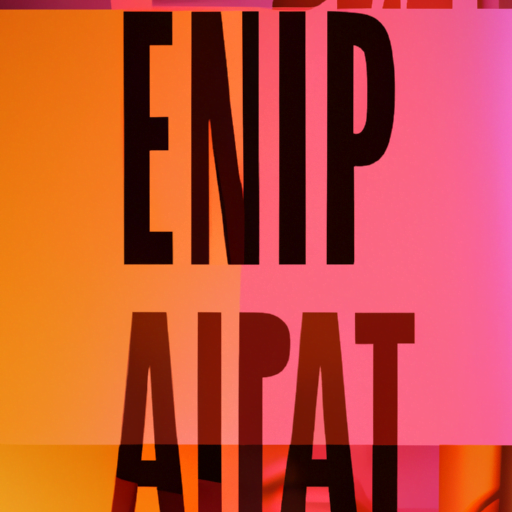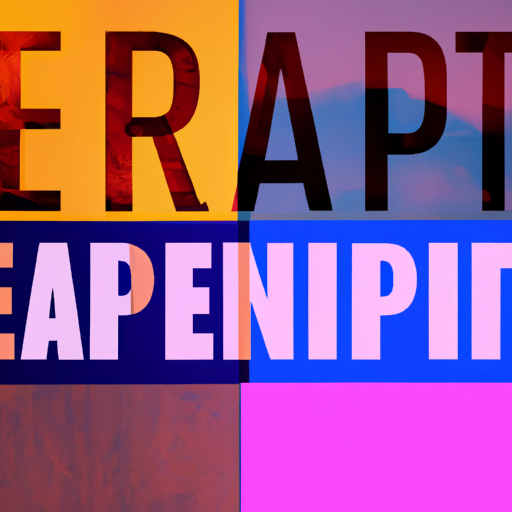
-
Table of Contents
- Experimental Typography: Blending Type and Image
- The Evolution of Typography
- What is Experimental Typography?
- The Significance of Experimental Typography
- Examples of Experimental Typography
- 1. Stefan Sagmeister’s “AIGA Detroit” Poster
- 2. Alex Trochut’s “More is More” Typography
- 3. Jessica Hische’s “Daily Drop Cap”
- The Impact of Experimental Typography
- Conclusion
Experimental Typography: Blending Type and Image

Typography is an essential element of design that has the power to convey meaning, evoke emotions, and enhance the overall visual experience. Traditionally, typography has been limited to the use of letters and characters to communicate messages. However, in recent years, designers have been pushing the boundaries of typography by experimenting with the integration of type and image. This article explores the concept of experimental typography, its significance in contemporary design, and provides examples of successful implementations.
The Evolution of Typography
Typography has come a long way since the invention of the printing press in the 15th century. Initially, typography was primarily used for practical purposes, such as printing books and newspapers. However, as technology advanced and design became more prominent, typography started to play a more significant role in visual communication.
With the rise of digital design tools, designers gained more flexibility and creative freedom in their typographic compositions. This led to the exploration of new techniques and styles, including experimental typography.
What is Experimental Typography?
Experimental typography is a design approach that goes beyond the conventional use of typefaces and explores innovative ways to blend type and image. It involves breaking the rules, challenging traditional design principles, and creating unique visual experiences.
Experimental typography often involves the manipulation of letterforms, the integration of images or illustrations, and the use of unconventional materials or techniques. It aims to create visually striking and thought-provoking designs that capture the viewer’s attention and convey a message in a memorable way.
The Significance of Experimental Typography
Experimental typography has gained significant popularity in contemporary design for several reasons:
- Breaking the Norms: Experimental typography allows designers to break free from the constraints of traditional typography and explore new possibilities. It encourages creativity and innovation, pushing the boundaries of design.
- Engaging and Memorable: By blending type and image in unexpected ways, experimental typography creates visually captivating designs that leave a lasting impression on the viewer. It helps brands and messages stand out in a crowded visual landscape.
- Enhancing Communication: Experimental typography can enhance the communication of a message by adding layers of meaning and emotion. It can evoke specific feelings or associations that go beyond the literal interpretation of the text.
Examples of Experimental Typography
Let’s explore some inspiring examples of experimental typography:
1. Stefan Sagmeister’s “AIGA Detroit” Poster
In this poster, Stefan Sagmeister combines typography and photography to create a visually striking design. The letters of the word “Detroit” are formed by the bodies of naked models, creating a provocative and attention-grabbing composition. This example demonstrates how experimental typography can push boundaries and challenge societal norms.
2. Alex Trochut’s “More is More” Typography
Alex Trochut is known for his experimental approach to typography. In his “More is More” series, he creates intricate and visually complex letterforms by layering multiple shapes and colors. The result is a mesmerizing composition that showcases the potential of experimental typography to create visually captivating designs.
3. Jessica Hische’s “Daily Drop Cap”
Jessica Hische’s “Daily Drop Cap” project is an excellent example of how experimental typography can be used to enhance storytelling. Each day, Hische creates a new decorative initial letter and shares it on her website. These ornate and intricate letterforms add a touch of elegance and personality to the text, making the reading experience more engaging and enjoyable.
The Impact of Experimental Typography
Experimental typography has had a significant impact on the design industry:
- Inspiring Creativity: Experimental typography has inspired designers to think outside the box and explore new possibilities in their work. It has encouraged a more experimental and playful approach to design, leading to innovative and groundbreaking solutions.
- Shaping Brand Identities: Many brands have embraced experimental typography to differentiate themselves and create a unique brand identity. By using unconventional type treatments, they can convey their personality, values, and positioning in a visually compelling way.
- Driving Engagement: Experimental typography has proven to be an effective tool for capturing the viewer’s attention and driving engagement. In a world saturated with visual content, designs that push the boundaries and surprise the audience are more likely to stand out and leave a lasting impression.
Conclusion
Experimental typography is a powerful design approach that blends type and image in innovative and unconventional ways. It breaks free from the constraints of traditional typography and opens up new possibilities for creative expression. By pushing the boundaries of design, experimental typography creates visually captivating and thought-provoking compositions that engage and inspire the viewer.
As technology continues to advance and design evolves, experimental typography will likely play an even more significant role in visual communication. It will continue to inspire creativity, shape brand identities, and drive engagement. Designers who embrace experimental typography will be at the forefront of innovation, creating designs that leave a lasting impact.
